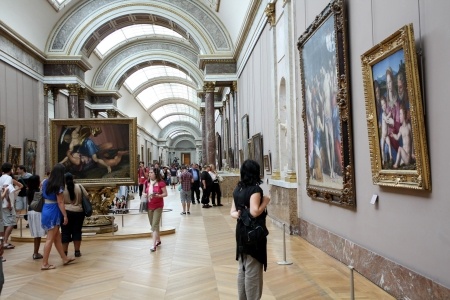
Degas’ Little Dancer – the mixed media sculpture experiment nearly everyone hated
Edgar Degas’ Little Dancer Aged Fourteen was pretty controversial when it was first shown in the 1880s. In this Moment in Art History we’ll discuss the sculpture, the criticism, and…

Book Review | Paul Gauguin: A Life by David Sweetman
David Sweetman’s Paul Gauguin: A Life is a little hard to come by (must not have sold well). I happened across it in our local library a few years ago and…

Video – Ask a Gallery Owner: Where to sign your artwork
In this video, I discuss the question of whether or not signatures are important on artwork. I share my opinion that signatures are important in the sense that collectors buying…

Ask a Gallery Owner | Fine Art Vs. Decorative Art?
I recently received an email that is reflective of a number of comments and questions I’ve seen on our social media pages and in emails. Many artists have wondered what…

A Moment in Art History – Auguste Rodin’s “Adam” – Incomplete Perfection
When Auguste Rodin decided that Adam would be part of his Gates of Hell, he didn’t anticipate that the sculpture of the Biblical first man would never stand in a…

Ask a Gallery Owner | Should Artists Brag About Their Sales?
I received the following question from a reader in Calgary: I have a burning question for you. I have discussed it with other artist friends, but I would like to…

Video – Ask a Gallery Owner: The Pitfalls of Dating Your Artwork
In this video, I discuss the pros and cons of dating your artwork. I argue that for artists who are seeking to promote and sell their work, dates don‘t offer…

Ask a Gallery Owner | Why Do Galleries Get Such High Commissions?
“I won’t work with galleries. The commission is too high!” I frequently hear some variation of this statement as I am conversing with artists. You’ve probably heard fellow artists say…

A Moment in Art History: “American Gothic” – The U.S.A.’s Most Iconic Painting?
Like many of you, I’ve found myself with a bit more time on my hands lately. Being a lover of art history, I decided to start a new video project,…

From a Reader – Creating Art Sales by Promoting Your Work to Your Network of Acquaintances
I’ve often written that selling artwork is all about building relationships with potential buyers. There’s another side to this, however, in that people with whom you already have a relationship…